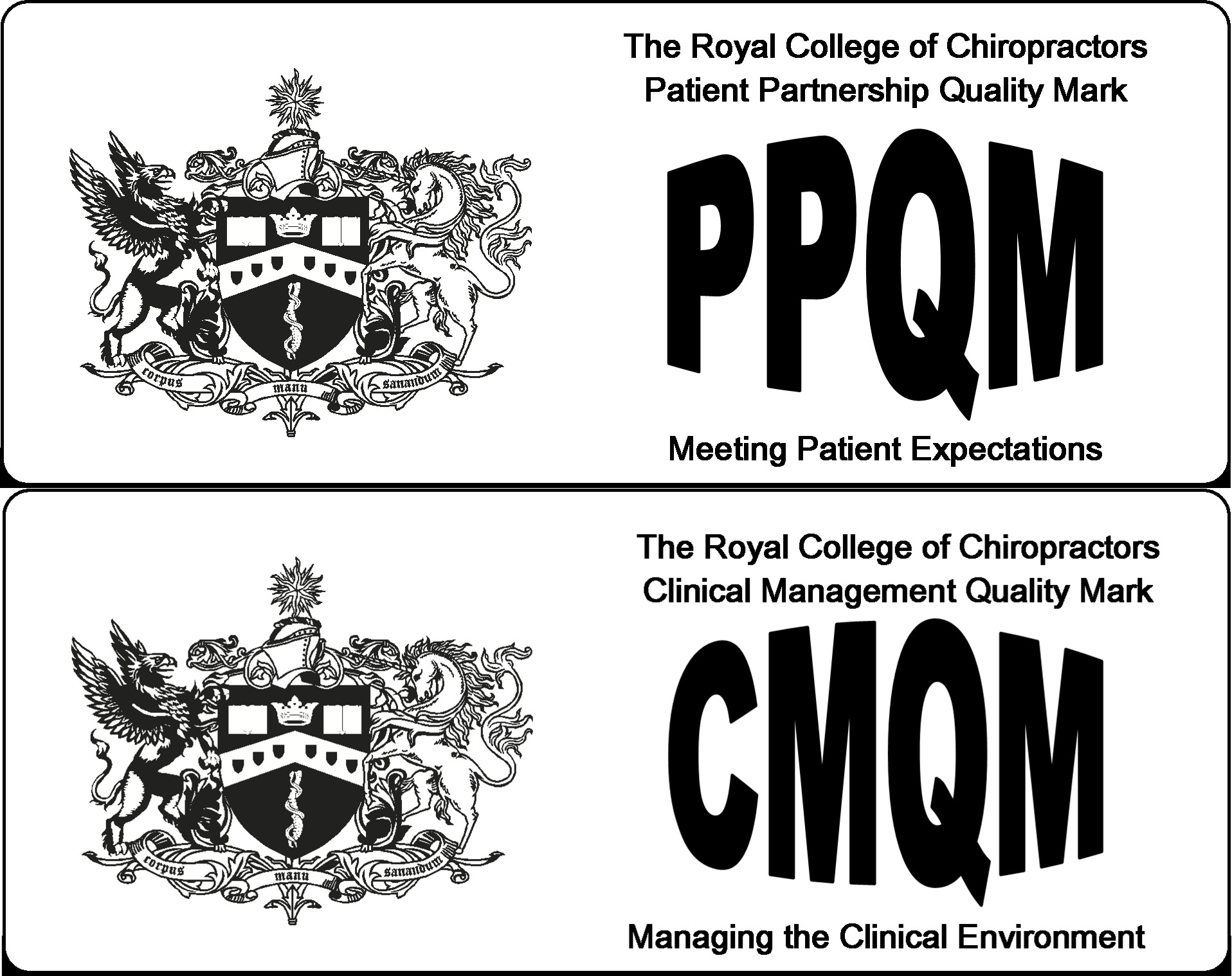Sciatica vs. Trapped Nerve: A Chiropractor’s Guide to Diagnosis & Treatment
As a chiropractor with over two decades of experience, I’ve sat across from thousands of patients who’ve walked into my practice with that same look of confusion and frustration. They’re experiencing shooting pain down their leg, numbness in their foot, or burning sensations that seem to come from nowhere, and they’re desperately trying to understand what’s happening to their body. “Doctor, is this sciatica or a trapped nerve?” they ask. “And more importantly, can you help me get my life back?”
I want you to know that I completely understand your frustration and concern. The pain you’re experiencing is real, it’s significant, and most importantly, it’s treatable. At Amersham Chiropractic Clinic, my colleagues and I have helped countless patients overcome the debilitating effects of both sciatica and trapped nerves. Today, I’m going to share with you the knowledge that has guided my practice and helped so many people find relief from these challenging conditions.
Experience the Benefits of Chiropractic Care Today
Understanding the Confusion: Why Sciatica vs. Trapped Nerve Diagnosis Matters
From my years of practice, I’ve learnt that the confusion between sciatica and trapped nerves is completely understandable. Both conditions can cause similar symptoms—shooting pain, numbness, tingling, and weakness—but they have different underlying causes and require different treatment approaches for optimal results.
Let me explain this in simple terms that I use with my patients every day. Think of your nervous system as the electrical wiring of your house. When there’s a problem with the wiring, the lights might flicker or go out, but the location of the actual problem might be quite different from where you notice the symptoms.
Sciatica: The Journey of Your Longest Nerve
Sciatica refers to pain that travels along the path of your sciatic nerve, which is the longest nerve in your body. This remarkable nerve starts in your lower back, passes through your buttock, and travels down the back of your leg all the way to your foot. When I examine patients with sciatica, I often find that the problem isn’t actually in their leg where they feel the pain—it’s usually in their lower back where the nerve originates.
In my practice, I’ve seen sciatica most commonly caused by:
- Herniated or bulging discs that press on the nerve roots
- Spinal stenosis (narrowing of the spinal canal)
- Piriformis syndrome (when the piriformis muscle compresses the sciatic nerve)
- Spondylolisthesis (when one vertebra slips forward over another)
Trapped Nerves: Local Problems with Widespread Effects
A trapped nerve, on the other hand, occurs when a peripheral nerve becomes compressed or irritated at a specific location. Unlike sciatica, which typically originates in the spine, trapped nerves can occur anywhere along a nerve’s pathway. I often see patients with trapped nerves in their wrists (carpal tunnel syndrome), elbows (ulnar nerve entrapment), or various locations in their spine.
What makes this particularly confusing for patients is that both conditions can cause similar symptoms, but the treatment approaches I use are quite different depending on the underlying cause.
How Chiropractic Care Specifically Helps with Nerve Pain
As a chiropractor, I have unique training and expertise in diagnosing and treating nerve-related conditions that many people don’t fully understand. Let me explain exactly how chiropractic care can help with both sciatica and trapped nerves, and why this approach is often so effective.
Restoring Proper Spinal Alignment and Function
The foundation of chiropractic treatment lies in optimising spinal function to reduce pressure on irritated nerves. When your spine isn’t moving properly, it can create inflammation and compression that affects nerve function. Through precise spinal adjustments, I can:
- Restore normal joint movement that may be restricted due to injury or poor posture
- Reduce inflammation around compressed nerve roots
- Improve space within the spinal canal and neural foramen (openings where nerves exit)
- Enhance nervous system function by removing interference to nerve signals
For sciatica patients, my spinal adjustments specifically target the lumbar spine and sacroiliac joints where the sciatic nerve originates. By improving function in these areas, I can often provide significant relief from leg pain that many patients thought would require surgery.
Addressing Muscle Imbalances and Soft Tissue Problems
Nerve problems rarely exist in isolation—they’re often accompanied by muscle imbalances and soft tissue dysfunction that perpetuate the condition. As a chiropractor, I’m trained to identify and treat these contributing factors:
Myofascial Release Techniques: I use hands-on approaches to release tension in muscles that may be compressing nerves or contributing to spinal dysfunction.
Trigger Point Therapy: Specific muscle knots can refer pain and create nerve-like symptoms. I’m skilled at identifying and treating these trigger points to reduce referred pain patterns.
Muscle Re-education: Through specific exercises and manual techniques, I help retrain muscles to function properly, reducing the likelihood of nerve compression.
Comprehensive Movement Assessment and Correction
One of my greatest strengths as a chiropractor is my ability to assess how you move and identify the mechanical factors contributing to your nerve pain. This goes far beyond just looking at your spine:
Gait Analysis: How you walk can reveal compensation patterns that contribute to nerve problems. I analyse your walking pattern and teach you how to move more efficiently.
Postural Assessment: Poor posture is a major contributor to nerve problems. I evaluate your posture and provide specific strategies to improve alignment throughout your day.
Functional Movement Screening: I assess how you perform daily activities and identify movement patterns that may be aggravating your nerve pain.
My Clinical Approach: How I Distinguish Between Sciatica and Trapped Nerves
After examining thousands of patients with nerve pain, I’ve developed a systematic approach that helps me accurately diagnose whether someone is dealing with sciatica, a trapped nerve, or sometimes both conditions simultaneously.
The Story Your Symptoms Tell Me
When you walk into my clinic, the first thing I do is listen carefully to your story. The way you describe your pain, when it started, and what makes it better or worse gives me crucial clues about what’s happening in your body.
Sciatica typically presents with these patterns:
- Sharp, shooting pain that travels from your lower back down your leg
- Pain that often worsens when sitting, coughing, or sneezing
- Numbness or tingling that follows the path of the sciatic nerve
- Weakness in your leg or foot
- Pain that’s usually worse on one side
Trapped nerves often have different characteristics:
- More localised pain around the area of nerve compression
- Symptoms that may worsen with specific movements or positions
- Numbness or tingling in the distribution of the affected nerve
- Muscle weakness specific to the muscles supplied by that nerve
My Physical Examination Process
During your examination, I use specific tests that help me understand exactly what’s happening with your nervous system. These aren’t just routine procedures—each test gives me valuable information about the location and severity of your nerve problem.
For suspected sciatica, I perform:
- Straight leg raise tests to assess nerve root irritation
- Reflex testing to evaluate nerve function
- Strength testing of specific muscle groups
- Sensory testing to map areas of numbness or altered sensation
- Postural and gait analysis to understand contributing factors
For trapped nerves, my examination focuses on:
- Specific provocative tests for the suspected nerve
- Assessment of the exact location of nerve compression
- Evaluation of surrounding muscle tightness or inflammation
- Range of motion testing in relevant joints
- Detailed neurological mapping of the affected area
Advanced Chiropractic Techniques I Use for Nerve Pain
My training as a chiropractor has equipped me with numerous specialised techniques specifically designed to address nerve-related conditions. These aren’t generic treatments—they’re precise interventions targeted at your specific problem.
Spinal Decompression Therapy
For patients with disc-related sciatica, I often use spinal decompression techniques that gently stretch the spine to reduce pressure on compressed nerve roots. This can be particularly effective for:
- Herniated discs pressing on nerve roots
- Spinal stenosis causing nerve compression
- Chronic disc degeneration with nerve involvement
The treatment involves using specialised equipment or manual techniques that create negative pressure within the disc, potentially allowing herniated material to retract and reducing pressure on affected nerves.
Flexion-Distraction Technique
This gentle, non-thrusting technique is one of my most effective tools for treating sciatica. Using a specialised table, I can apply controlled movements that:
- Increase the space between vertebrae
- Reduce pressure on disc material
- Improve circulation to affected areas
- Allow natural healing processes to occur
Many patients who are apprehensive about traditional spinal adjustments find this technique comfortable and effective for their nerve pain.
Instrument-Assisted Adjustments
For patients with acute nerve pain or those who prefer gentler approaches, I use specialised instruments that deliver precise, controlled adjustments without the typical “popping” sounds. These tools allow me to:
- Provide specific adjustments to targeted areas
- Control the force and speed of treatment
- Treat sensitive areas with greater precision
- Accommodate patients who may be uncomfortable with manual techniques
Extremity Adjustments for Peripheral Nerve Problems
When dealing with trapped nerves in the arms or legs, I’m trained to adjust peripheral joints that may be contributing to nerve compression:
- Carpal tunnel syndrome treatment through wrist and elbow adjustments
- Thoracic outlet syndrome management through rib and first rib adjustments
- Piriformis syndrome treatment through sacroiliac and hip adjustments
How I Integrate Chiropractic Care with Other Therapies
As a modern chiropractor, I understand that the best outcomes often come from combining chiropractic techniques with other evidence-based therapies. This integrated approach addresses all aspects of your nerve pain.
Therapeutic Exercise Prescription
I design specific exercise programmes tailored to your condition and stage of healing:
For Sciatica Patients:
- Core stabilisation exercises to support spinal function
- Nerve mobilisation techniques to improve nerve gliding
- Postural strengthening to address underlying imbalances
- Flexibility exercises to maintain spinal mobility
For Trapped Nerve Patients:
- Nerve gliding exercises specific to the affected nerve
- Strengthening exercises for supporting muscle groups
- Ergonomic training to prevent recurrence
- Gradual return to activity protocols
Manual Therapy Techniques
- My hands-on training allows me to provide various manual therapies that complement spinal adjustments:
- Soft Tissue Mobilisation: Addressing muscle and fascial restrictions that contribute to nerve compression.
- Joint Mobilisation: Gentle movements to improve joint function without high-velocity adjustments.
- Myofascial Release: Releasing tension in the connective tissue surrounding muscles and nerves.
Lifestyle and Ergonomic Counselling
- A crucial part of my role as a chiropractor is educating patients about how daily activities and lifestyle factors contribute to their nerve pain:
- Workplace Ergonomics: Assessing and modifying your work environment to reduce nerve stress.
- Sleep Positioning: Teaching proper sleeping positions to support spinal health and nerve function.
- Activity Modification: Guiding you through safe ways to maintain activity during recovery.
- Stress Management: Addressing how emotional stress can contribute to muscle tension and nerve problems.
- Why Accurate Diagnosis Transforms Treatment Outcomes
- In my experience, the difference between good results and excellent results often comes down to accurate diagnosis. When I can precisely identify whether you’re dealing with sciatica, a trapped nerve, or a combination of both, I can tailor your treatment plan to address the specific mechanisms causing your pain.
The Precision Medicine Approach I Use
Every patient who comes to see me receives a completely individualised treatment plan based on their specific diagnosis, lifestyle, and goals. This isn’t a one-size-fits-all approach—it’s precision care that addresses your unique situation.
For sciatica patients, my treatment typically focuses on:
- Spinal adjustments to improve joint function and reduce nerve pressure
- Specific exercises to strengthen your core and improve spinal stability
- Postural education to prevent recurrence
- Activity modifications during the healing phase
- Coordination with other healthcare providers when necessary
For trapped nerve patients, my approach emphasises:
- Targeted treatments to reduce compression at the specific site
- Soft tissue therapies to address surrounding muscle tension
- Ergonomic modifications to eliminate repetitive stresses
- Progressive exercises to restore normal function
- Education about prevention strategies
Red Flags: When I Recommend Immediate Medical Attention
Throughout my career, I’ve developed a keen sense for recognising when nerve pain might indicate a more serious underlying condition that requires immediate medical intervention. Your safety is always my primary concern.
Symptoms That Require Urgent Evaluation
I immediately refer patients for emergency medical evaluation when they present with:
- Loss of bowel or bladder control
- Progressive weakness in both legs
- Severe pain following trauma or injury
- Fever accompanying nerve pain
- Progressive neurological deficits
These symptoms can indicate serious conditions like cauda equina syndrome or spinal cord compression that require immediate medical intervention. Whilst these situations are rare, recognising them quickly can prevent permanent complications.
When Conservative Care Isn’t Enough
Most of the patients I see respond well to conservative chiropractic treatment, but I’m always honest about when someone might need additional interventions. If a patient isn’t improving after a reasonable trial of conservative care, I work closely with medical colleagues to ensure they receive the most appropriate treatment.
This might include referrals for:
- Advanced imaging studies like MRI
- Specialist consultations with neurologists or orthopaedic surgeons
- Injection therapies for specific conditions
- Surgical consultation when conservative approaches have been exhausted
5 Key Action Points for Managing Your Nerve Pain
Based on my years of experience helping patients with sciatica and trapped nerves, here are five crucial steps you can take immediately to support your recovery:
- Document Your Symptoms with Clinical Precision
Keep a detailed pain diary that includes exactly where you feel symptoms, what activities trigger them, and what provides relief. Note the specific pattern of your pain—does it shoot down your leg in a lightning-bolt pattern (suggesting sciatica) or stay more localised (suggesting a trapped nerve)? Rate your pain levels throughout the day and track any numbness, tingling, or weakness. This information is invaluable for accurate diagnosis and treatment planning.
- Implement Immediate Activity Modifications
Avoid activities that clearly worsen your symptoms whilst maintaining gentle movement to prevent stiffness. For suspected sciatica, avoid prolonged sitting and forward bending movements. For trapped nerves, identify and temporarily eliminate repetitive activities that aggravate your symptoms. This isn’t about becoming sedentary—it’s about being smart during the acute phase whilst your body heals.
- Apply Appropriate Early Intervention Strategies
Use ice for 15-20 minutes several times daily if your symptoms are acute (less than 72 hours) and associated with inflammation. For chronic conditions, gentle heat may be more beneficial for muscle relaxation. Perform gentle movements within your pain-free range of motion. Avoid aggressive stretching or manipulation that might worsen nerve irritation during the acute phase.
- Optimise Your Recovery Environment
Modify your sleeping position to reduce nerve stress—many patients find relief sleeping on their side with a pillow between their knees. Adjust your work environment to eliminate positions or activities that aggravate your symptoms. Consider temporary use of supportive devices like lumbar cushions or ergonomic modifications, but don’t rely on these as permanent solutions.
- Seek Professional Chiropractic Evaluation Without Delay
Contact Amersham Chiropractic Clinic immediately for professional assessment. Early intervention typically leads to faster resolution and prevents the development of chronic pain patterns. Prepare for your appointment by gathering information about symptom onset, previous treatments, current medications, and specific activities that affect your pain. The sooner you receive accurate diagnosis and appropriate chiropractic treatment, the better your outcomes will be.
Understanding Your Recovery Timeline with Chiropractic Care
One of the most common questions I hear from patients is, “How long will this take?” Based on my experience treating thousands of patients with sciatica and trapped nerves, I can provide some general guidelines whilst emphasising that everyone’s recovery is unique.
Factors That Influence Recovery Time
Acute vs. Chronic Conditions: Patients with acute nerve pain (symptoms present for less than six weeks) typically respond more quickly than those with chronic conditions that have persisted for months or years.
Underlying Cause: Simple disc bulges often respond faster than complex conditions involving multiple levels of the spine or significant structural changes.
Patient Compliance: Following recommended exercises, activity modifications, and lifestyle changes dramatically impacts recovery speed and long-term success.
Overall Health: General fitness, stress levels, and other health conditions can influence how quickly your body responds to chiropractic treatment.
Typical Recovery Phases with Chiropractic Care
Acute Relief Phase (1-2 weeks): Initial chiropractic treatment focuses on reducing pain and inflammation whilst beginning to address underlying mechanical problems. Many patients notice some improvement within the first few treatments.
Corrective Phase (2-8 weeks): Chiropractic treatment emphasises restoring normal function and addressing the root causes of your nerve problem. Progressive exercises help retrain proper movement patterns.
Maintenance Phase (8+ weeks): Focus shifts to preventing recurrence through continued exercises, lifestyle modifications, and periodic chiropractic check-ups as needed.
How Chiropractic Care Compares to Other Treatment Options
Many patients come to me after trying various other treatments without success. I want to explain how chiropractic care differs from and complements other approaches to nerve pain.
Chiropractic vs. Medication Approaches
Whilst medications can provide temporary pain relief, they don’t address the underlying mechanical problems causing your nerve pain. As a chiropractor, I focus on:
- Correcting the structural problems causing nerve compression
- Improving function rather than just masking symptoms
- Providing drug-free pain relief that doesn’t have side effects
- Teaching you strategies to prevent recurrence
Chiropractic vs. Surgery
For most patients with sciatica and trapped nerves, surgery isn’t necessary when proper chiropractic care is provided early in the condition. Chiropractic offers:
- Non-invasive treatment that avoids surgical risks
- Faster recovery times compared to surgical interventions
- Lower costs than surgical procedures
- No need for lengthy rehabilitation periods
However, I’m always honest with patients about when surgical consultation might be appropriate, and I work collaboratively with surgeons when needed.
Chiropractic as Part of Integrated Care
I often work alongside other healthcare providers to ensure you receive comprehensive care:
- Physiotherapists for specific exercise programmes
- Massage therapists for additional soft tissue work
- Medical doctors for medication management when needed
- Pain specialists for injection therapies in specific cases
Prevention: My Advice for Long-Term Success
After helping a patient recover from sciatica or a trapped nerve, my focus shifts to prevention. The lifestyle changes and habits I recommend aren’t just suggestions—they’re based on years of observing what keeps my patients healthy and pain-free.
Core Stability and Movement Patterns
Strengthening your core muscles is crucial for preventing sciatica recurrence. I teach my patients specific exercises that target the deep stabilising muscles of their spine, not just the superficial “six-pack” muscles that many people focus on.
Proper movement patterns during daily activities can prevent many nerve problems. I spend time teaching patients how to lift, bend, and move in ways that protect their spine and peripheral nerves.
Ergonomic Excellence
Most trapped nerve problems I see are related to repetitive stresses from poor workplace ergonomics or lifestyle habits. I work with patients to identify and eliminate these problematic patterns.
Simple changes in workstation setup, sleeping positions, or exercise techniques can make the difference between ongoing health and recurring problems.
Regular Chiropractic Maintenance
Just as you service your car regularly to prevent breakdowns, periodic chiropractic check-ups can help maintain optimal spinal function and prevent minor problems from becoming major ones.
I recommend maintenance care schedules based on your individual risk factors, activity level, and history of problems.
Your Journey to Recovery Starts with Understanding
As I reflect on my years of practice and the thousands of patients I’ve helped, I’m continually amazed by the human body’s capacity for healing when given the right support and environment.
Whether you’re dealing with sciatica, a trapped nerve, or you’re still not sure which condition is causing your symptoms, I want you to know that effective, non-invasive chiropractic treatment options exist. You don’t have to accept ongoing pain as a normal part of life.
The key to successful treatment lies in accurate diagnosis, appropriate chiropractic care, and your active participation in the recovery process. My role is to guide you through this journey with expertise, compassion, and unwavering commitment to your wellbeing.
Don’t let another day pass wondering whether your nerve pain will resolve on its own or worrying about what might be causing your symptoms. As an experienced chiropractor for nerve pain, I’ve seen how proper diagnosis and treatment can transform lives. Call us today at Amersham Chiropractic Clinic at 01494 434 366 to schedule your comprehensive evaluation. Together, we’ll determine whether you’re dealing with sciatica, a trapped nerve, or another condition, and create a personalised chiropractic treatment plan that gets you back to the pain-free life you deserve.
Your journey to understanding and overcoming your nerve pain begins with taking that first step to seek professional chiropractic help. I’m here to support you every step of the way, combining clinical expertise with genuine care for your wellbeing.
Ready to finally get answers about your nerve pain and start your journey to recovery? Contact Amersham Chiropractic Clinic at 01494 434 366 and let me help you distinguish between sciatica and trapped nerve symptoms whilst providing the expert chiropractic care you need. Your pain-free future is closer than you think, and I’m here to help you achieve it.






